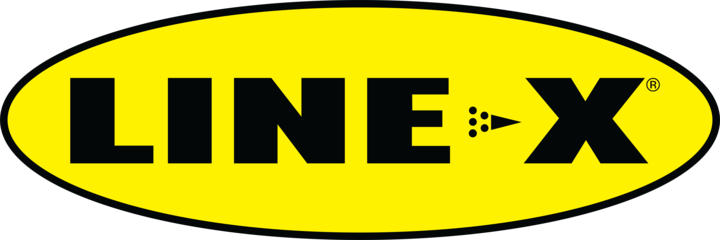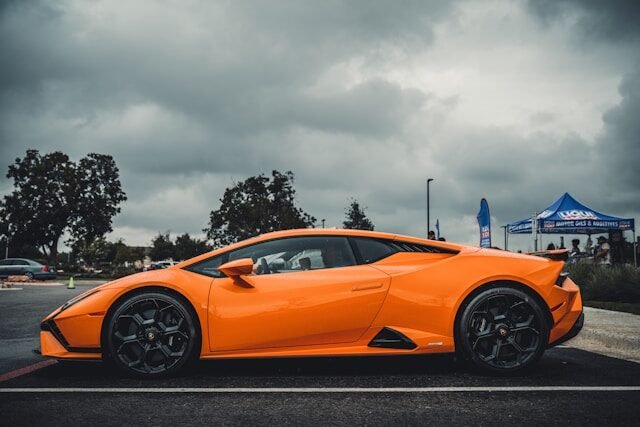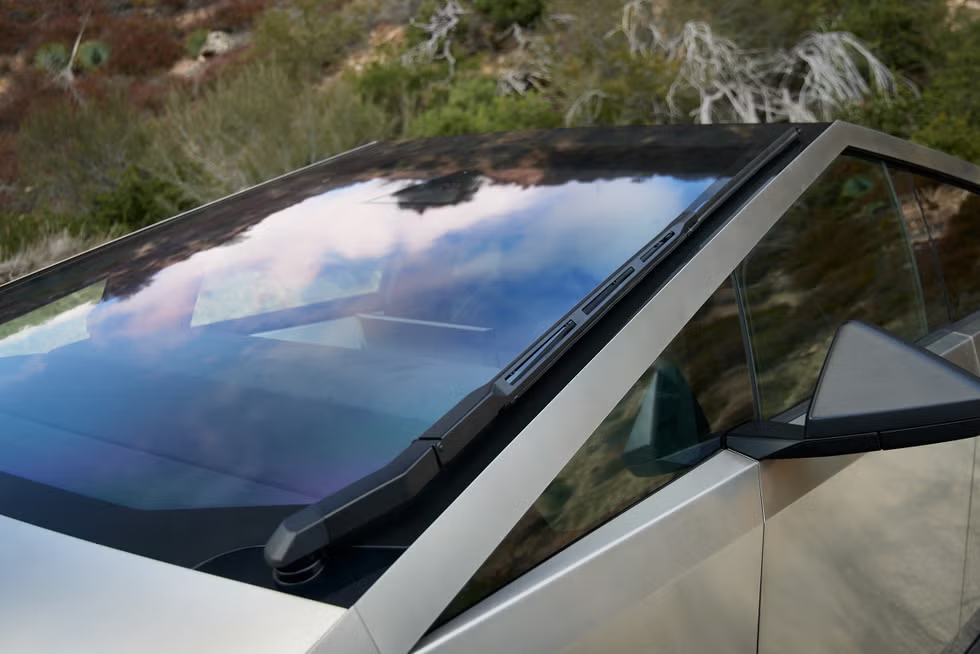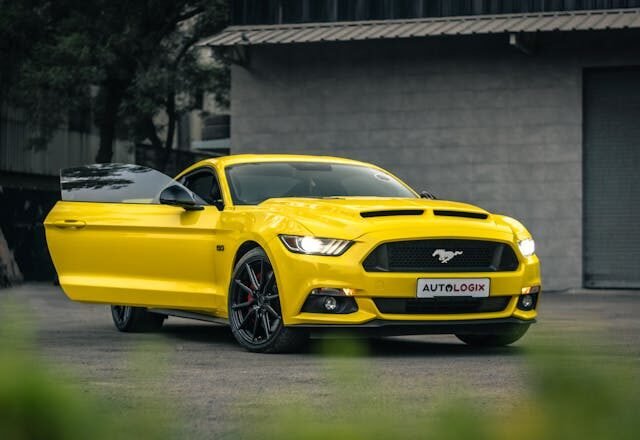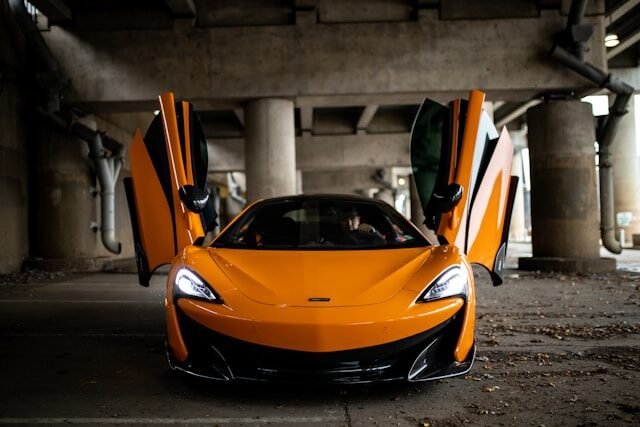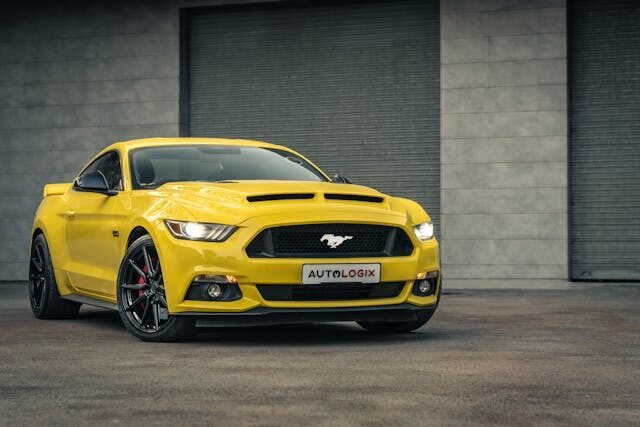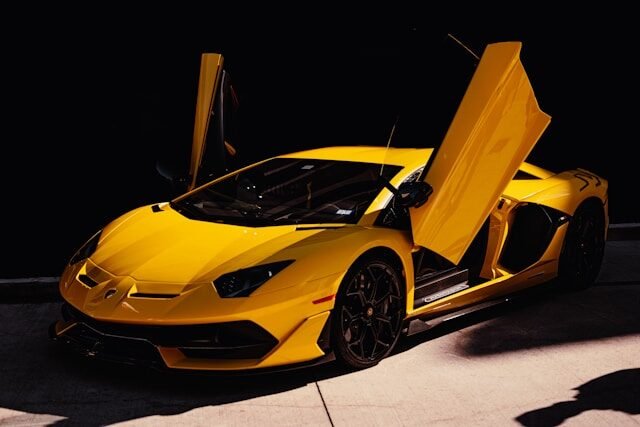Electric vehicles are changing how we think about driving. But they come with new challenges. Range anxiety tops the list for most owners.
What if you could extend your EV’s range without upgrading the battery? Window tinting offers a practical solution that many drivers overlook.
Heat is your electric vehicle’s hidden enemy. It drains battery power faster than you might imagine. Your air conditioning system works overtime fighting solar heat gain through untinted windows.
This article explores exactly how window tinting improves energy efficiency in electric vehicles. You’ll discover the science behind heat rejection. You’ll learn about real-world range improvements. And you’ll understand why this simple upgrade makes such a significant difference.
Let’s break down how something as straightforward as tinted windows can dramatically impact your EV’s performance and efficiency.
Understanding Energy Efficiency in Electric Vehicles
Energy efficiency determines how far your electric vehicle travels on a single charge. Unlike gas-powered cars that waste most fuel as heat, EVs convert energy more efficiently. But they still face limitations.
Every system in your EV draws power from the same source: the battery pack. The motor uses the majority of this energy. But climate control systems consume a surprising amount too.
Think of your battery as a fixed daily budget. Every watt you spend on air conditioning is a watt unavailable for driving. Reducing AC usage directly extends your range.
What Makes EVs Different from Gas-Powered Cars
Traditional vehicles generate massive amounts of waste heat from their engines. This heat actually helps warm the cabin in winter. The AC system uses mechanical energy from the engine, which is already running anyway.
Electric vehicles work completely differently. They produce minimal waste heat. Heating and cooling become deliberate energy expenses rather than convenient byproducts.
When you blast the AC in your EV, you’re directly reducing how far you can drive. The relationship is immediate and measurable. This makes temperature management critically important for EV owners.
The Battery Range Challenge
Range remains the biggest concern for potential EV buyers. Most modern electric vehicles offer 200 to 400 miles per charge under ideal conditions. But those ideal conditions rarely exist in real life.
Hot weather dramatically reduces range. Studies show that running AC at 95°F can reduce range by 17% or more. That’s like losing 50 miles on a 300-mile range vehicle.
Cold weather causes similar problems, though heating draws even more power than cooling. But during warm months, window tinting provides a practical solution that works passively, requiring zero battery power.

The Science Behind Window Tinting
Window Tinting Riviera Beach isn’t just darkened glass. Modern tint films use advanced technology to selectively block harmful radiation while allowing visible light through.
Understanding how these films work helps you appreciate their impact on energy efficiency. The technology has evolved dramatically over the past decade.
How Tint Films Work to Block Heat
Heat enters your vehicle through windows in three ways: conduction, convection, and radiation. Solar radiation causes most of the problem.
Sunlight contains visible light, ultraviolet radiation, and infrared radiation. You see the visible light. UV radiation damages your skin and interior materials. Infrared radiation creates the heat you feel.
Quality window tinting films contain materials that reflect or absorb infrared radiation before it enters your cabin. They act like sunscreen for your car, blocking heat while allowing you to see clearly.
The best films reject up to 99% of UV rays and 80% or more of infrared radiation. This dramatic reduction in solar energy keeps your interior significantly cooler.
Different Types of Window Tinting Materials
Not all tint perform equally. The material composition determines effectiveness and longevity.
Dyed films are the most basic and affordable. They absorb some heat but fade over time. They offer minimal heat rejection compared to advanced options.
Metallic films contain tiny metal particles that reflect heat. They perform better than dyed films but can interfere with radio signals and electronics.
Carbon films provide excellent heat rejection without signal interference. They don’t fade and maintain consistent performance for years.
Ceramic films represent the premium tier. They use nano-ceramic particles to achieve superior heat rejection while maintaining maximum visibility. These films offer the best energy efficiency benefits for electric vehicles.
Line X Auto Spa specializes in high-performance tinting solutions that maximize heat rejection for EV owners seeking optimal efficiency gains.
UV Protection and Infrared Rejection
Ultraviolet radiation passes through untinted glass easily. It fades upholstery, cracks dashboards, and damages your skin during long drives.
Quality window tinting blocks 99% of UV rays immediately upon installation. This protection lasts for the life of the film, typically 10 years or more with proper care.
Infrared rejection matters even more for energy efficiency. IR radiation creates the intense heat you feel when sunlight streams through windows. High-quality films reject 70-80% of this heat before it enters your vehicle.
This rejection happens passively, requiring no energy input. It’s like having an invisible shield that works constantly, whether you’re driving or parked in the sun.
Heat Gain and Its Impact on EV Battery Performance
Solar heat gain refers to the temperature increase caused by sunlight entering through windows. In an untinted vehicle, this effect is dramatic and immediate.
Park your EV in direct sunlight for an hour. The interior temperature can climb to 140°F or higher, even when it’s only 85°F outside. This greenhouse effect creates a challenging environment for your climate control system.
How Cabin Temperature Affects Energy Consumption
When you enter a superheated vehicle, your first instinct is to crank the AC to maximum. This emergency cooling mode draws tremendous power from your battery.
Your AC system must overcome a massive temperature differential. Cooling from 140°F down to 72°F requires far more energy than maintaining a comfortable temperature in the first place.
With window tinting, your parked vehicle stays significantly cooler. Instead of 140°F, the interior might reach only 110°F or less. That 30-degree difference translates directly to reduced AC workload and preserved battery range.
The Air Conditioning Power Drain
Electric vehicle AC systems can consume 3-4 kilowatts of power when running at maximum capacity. That’s enough electricity to power several homes.
To put this in perspective, most EV motors operate around 70% efficiency. But climate control systems work much harder against thermal loads. Every degree of unnecessary heat your AC must remove wastes precious battery capacity.
Reducing the thermal load through window tinting means your AC cycles less frequently. It runs at lower intensity when it does operate. These compounding savings add up to measurable range extension.

Window Tinting as a Thermal Barrier
Think of window tinting as insulation for your windows. Just as wall insulation keeps homes comfortable year-round, window tint creates a thermal barrier that moderates interior temperatures.
This barrier works in both directions. It keeps heat out during summer and helps retain warmth during winter, though the summer benefits are more significant for most climates.
Reducing Solar Heat Gain Through Glass
Untinted automotive glass allows about 75% of solar energy to pass through. Your dark dashboard and seats absorb this energy and radiate it as heat.
Premium ceramic window tinting can reduce solar heat gain by 60-70%. That means only 25-30% of the sun’s energy enters your vehicle compared to untinted glass.
This reduction is enormous. It’s the difference between walking into an oven and entering a merely warm vehicle. Your AC system notices this difference immediately in how hard it must work.
Maintaining Comfortable Interior Temperatures
Once your vehicle reaches a comfortable temperature, window tinting helps maintain it with minimal energy input. The thermal barrier reduces heat transfer in both directions.
During driving, this means your AC cycles on less frequently. It runs for shorter periods when it does activate. These brief savings occur hundreds of times during typical driving, accumulating into significant efficiency improvements.
The passive nature of this benefit is crucial. Tinted windows work 24/7 without drawing any battery power. They’re always protecting your EV’s energy reserves, whether you’re driving cross-country or parked at the grocery store.
Measurable Energy Savings from Window Tinting
Real-world data demonstrates clear efficiency improvements from quality window tinting. The exact savings vary based on climate, driving patterns, and tint quality.
Multiple studies have measured these effects under controlled conditions. The results consistently show meaningful improvements in energy consumption and range.
Real-World Range Extension Data
Research conducted in hot climates shows that window tinting can reduce AC-related energy consumption by 20-30%. This translates to approximately 3-5% overall range extension during summer months.
That might sound modest until you calculate actual miles. On a 300-mile range EV, 4% equals 12 additional miles per charge. Over a year of daily driving, that’s thousands of miles gained simply by reducing thermal load.
Some drivers report even better results in extreme climates. Arizona and Texas EV owners have measured improvements exceeding 6% during peak summer months when AC usage is constant.
The key factor is baseline AC usage. If you’re running maximum cooling for extended periods, window tinting provides the most dramatic improvements. Moderate climates see smaller but still worthwhile gains.
Climate Considerations and Seasonal Variations
Geographic location dramatically affects the benefits of window tinting. Southern states with intense, year-round sun exposure see the greatest returns.
But even northern climates benefit during summer months. June through August solar intensity is similar across much of the country. Those three months of improved efficiency justify the investment.
Winter presents different dynamics. Heat retention from tinting provides minor benefits, but the primary winter range loss comes from battery heating rather than cabin climate. Still, anything that reduces energy waste helps during cold weather.
Year-round, window tinting provides UV protection and glare reduction regardless of temperature. The energy efficiency gains are simply an additional benefit layered on top of these other advantages.
Battery Longevity and Temperature Management
High temperatures don’t just drain your battery faster in the moment. They also accelerate long-term degradation that permanently reduces capacity.
Lithium-ion batteries, like those in your EV, are temperature-sensitive. They perform best between 60-80°F. Sustained exposure to high temperatures accelerates chemical reactions that degrade battery materials.
How Heat Affects Battery Health Over Time
Every battery has a limited number of charge cycles before capacity begins declining. Heat accelerates this aging process significantly.
Studies show that battery degradation doubles for every 15°F increase in average operating temperature. A battery regularly operating at 95°F degrades twice as fast as one operating at 80°F.
Your EV’s battery management system works to prevent overheating. But it can’t eliminate the thermal stress entirely, especially during extended summer driving or fast charging in hot conditions.
Window tinting indirectly supports battery health by reducing the overall thermal load on the vehicle. A cooler cabin means less AC usage, which means less heat generation from that system, which means lower overall operating temperatures.
Protecting Your Investment Long-Term
Electric vehicles represent significant investments. The battery pack alone can cost $10,000 or more to replace. Protecting its longevity makes financial sense.
Any modification that reduces thermal stress protects your battery’s long-term health. Window tinting accomplishes this while simultaneously improving your daily driving efficiency.
Think of it as preventive maintenance. You can’t see the battery protection happening, but it accumulates over years of ownership. When other similar EVs need battery replacements at 150,000 miles, yours might still perform well past 200,000 miles.
This extended battery life has real monetary value. It improves your vehicle’s resale worth and delays expensive replacement costs. The modest investment in quality window tinting pays dividends throughout your ownership experience.
Additional Benefits Beyond Energy Efficiency
While energy efficiency drove this discussion, window tinting provides multiple other advantages that EV owners appreciate.
These secondary benefits often matter as much as the energy savings in daily driving experience.
Glare Reduction for Safer Driving
Intense sunlight creates dangerous glare that affects visibility and causes eye strain. Early morning and late afternoon driving can become genuinely hazardous when the sun sits at the perfect angle.
Window tinting cuts glare dramatically without overly darkening your interior. You maintain clear visibility while eliminating the squinting and discomfort that bright light causes.
This safety benefit is especially valuable for electric vehicles with large glass areas. Modern EV design often emphasizes expansive windows and glass roofs that maximize natural light but can create significant glare problems.
Reducing glare reduces driver fatigue on long journeys. You arrive more alert and less stressed from fighting against harsh sunlight for hours.
Interior Protection from Sun Damage
UV radiation fades upholstery, cracks leather, and warps plastic trim components. This damage happens gradually but inevitably in untreated vehicles.
Premium window tinting blocks 99% of UV rays from the moment of installation. Your interior materials stay newer-looking far longer. Colors remain vibrant. Materials maintain their texture and integrity.
This protection has tangible resale value. A well-preserved interior commands higher prices in the used vehicle market. Buyers notice the difference between a sun-damaged cabin and one that looks nearly new after years of use.
The environmental benefit shouldn’t be overlooked either. Extending interior lifespan reduces the need for replacement materials and the environmental cost of manufacturing them.
Legal Considerations for Window Tinting
Before installing window tinting, understand your local regulations. Every state has specific laws governing how dark tint can be and which windows can be tinted.
Violating these laws can result in tickets, failed inspections, and forced tint removal. Knowing the rules saves hassle and expense.
Understanding Visible Light Transmission Requirements
Visible Light Transmission (VLT) measures how much light passes through tinted windows. A 50% VLT tint allows half the visible light through. Lower percentages mean darker tint.
Most states regulate front side window VLT more strictly than rear windows. Windshield tinting is often limited to a small strip along the top edge.
Rear side windows and back glass typically allow darker tint since they don’t affect the driver’s primary visibility. Many states permit 20-35% VLT or even darker on rear windows.
Professional installers like Line X Auto Spa understand local regulations thoroughly. They ensure your window tinting complies with all legal requirements while maximizing heat rejection and energy efficiency benefits.
State-by-State Regulations
Tinting laws vary significantly across the United States. Some states are very permissive, allowing 20% VLT on front windows. Others restrict front windows to 70% or higher, permitting only very light tint.
Medical exemptions exist in many states for drivers with light-sensitive conditions. These exemptions often allow darker tint than standard regulations permit.
Checking your specific state’s current regulations before installation is essential. Laws change periodically, so verify the most recent requirements rather than relying on outdated information.
Nationwide regulations for commercial vehicles differ from passenger vehicles. If you drive your EV for business purposes, additional restrictions might apply.
Choosing the Right Tint for Your Electric Vehicle
Selecting appropriate window tinting requires balancing several factors: heat rejection performance, visible light transmission, appearance preferences, and budget.
For electric vehicles specifically, prioritize heat rejection above all other characteristics. Maximum energy efficiency demands premium tint materials.
Ceramic vs. Metallic vs. Carbon Films
Each tint material offers distinct advantages and limitations. Understanding these differences helps you make an informed choice.
Metallic tint provide good heat rejection at moderate prices. However, they can interfere with GPS, cell phone signals, and radio reception. For modern connected EVs, this interference is problematic.
Carbon tint offer excellent heat rejection without signal interference. They provide a sleek appearance and don’t fade over time. They represent a solid middle ground for most drivers.
Ceramic tint deliver superior performance in every category. They reject the most heat while maintaining excellent visibility. They never interfere with electronics. They last longer than other options.
For maximum energy efficiency in your electric vehicle, ceramic window tinting is the optimal choice. The higher upfront cost pays back through better performance and longer lifespan.
Professional Installation Quality Matters
Tint film quality matters, but installation quality matters just as much. Poor installation ruins even premium films through bubbles, creases, and peeling edges.
Professional installers have the skills, tools, and experience to apply window tinting flawlessly. They prepare surfaces properly, cut films precisely, and eliminate air bubbles completely.
Quality installations come with warranties covering both materials and workmanship. If problems develop, reputable installers stand behind their work and make corrections.
DIY tinting rarely matches professional results. The specialized tools and techniques required aren’t easily replicated by first-timers. The small amount saved on labor costs isn’t worth the risk of poor results and wasted materials.
Line X Auto Spa uses precision installation techniques and premium materials to ensure your window tinting performs optimally throughout its entire lifespan. Professional quality makes the difference between adequate and excellent results.
Line X Auto Spa Serving the Spencer Lakes Community and Beyond in West Palm Beach, FL
Line X Auto Spa is dedicated to serving the diverse needs of the local community of West Palm Beach, FL, including individuals residing in neighborhood like Spencer Lakes. With its convenient location near landmarks such as the ” Palm Beach Harley-Davidson and
Holiday Inn Express West Palm Beach Metrocentre by IHG and major intersections like 45th St & Congress Ave
and Village Blvd & Shiloh Dr (coordinates: 26.75368061970406, -80.0920931), we offer Window Tinting services.
Get Window Tinting Services at Spencer Lakes Now
Navigate from Spencer Lakes to Line X Auto Spa Now
How Window Tinting Boosts Energy Efficiency in Electric Vehicles (EVs)?
- Up to 80% Solar Heat Rejection: Advanced ceramic and nano-ceramic window films block as much as 80% of total solar energy, drastically reducing cabin heat buildup.
- Interior Temperature Drop: Proper tinting lowers cabin temperatures by 10–15°F, cutting the load on EV air conditioning systems.
- Battery Range Extension: Reduced AC use can improve EV driving range by 15–25%, translating to more miles per charge and less battery drain.
- Energy Savings: Studies show window tinting can reduce energy consumption related to cooling by up to 15–30%, contributing to longer battery life and lower carbon footprint.
- UV Protection: Tint block up to 99% of harmful UV rays, protecting interiors and preserving vehicle value.
Visual Chart Concepts:
- Bar Chart: Comparison of solar heat rejection rates by tint type (Dyed ~40%, Metallic ~60%, Ceramic/Nano-Ceramic ~70-80%)
- Line Graph: EV battery range (%) vs. AC usage with and without window tinting, showing 15-25% range improvement
Temperature Reduction Heat Map: Interior cabin temperature differences (°F) on sunny days with clear vs. tinted windows
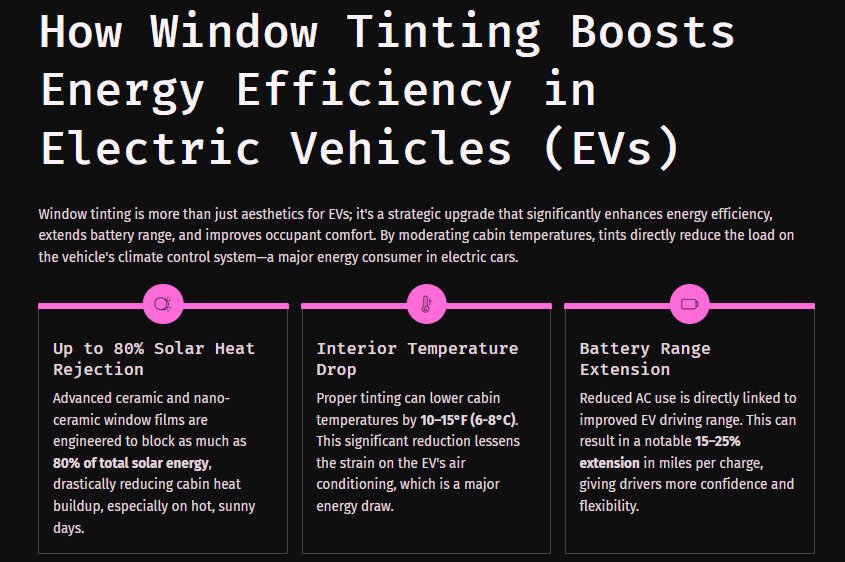

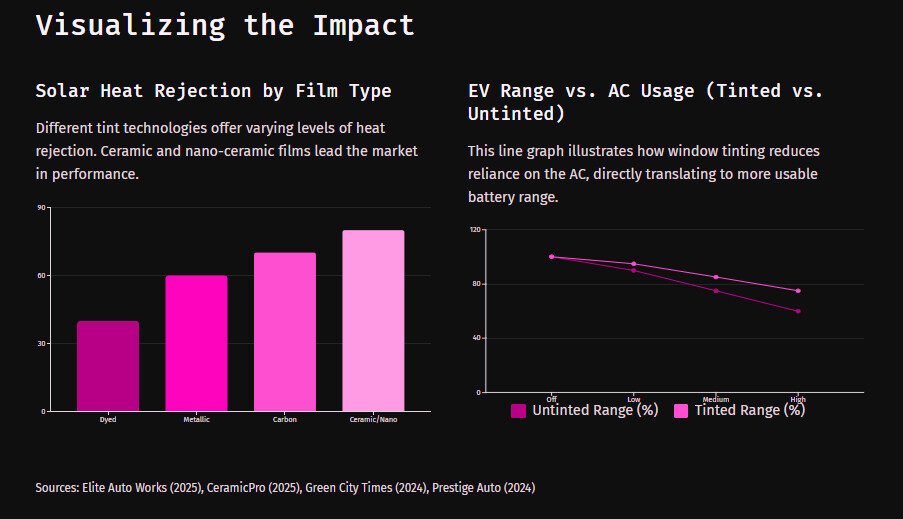
Sources: Elite Auto Works (2025), CeramicPro (2025), Green City Times (2024), Prestige Auto (2024)
Window tinting offers electric vehicle owners a simple, effective way to improve energy efficiency and extend driving range. The science is straightforward: blocking solar heat reduces air conditioning demand, which preserves battery power for driving.
Real-world results confirm what physics predicts. Quality tinting can reduce AC-related energy consumption by 20-30%, translating to 3-6% range extension during warm weather. That’s free miles gained through a one-time investment.
Beyond efficiency, you gain UV protection, glare reduction, interior preservation, and enhanced comfort. Your EV becomes more pleasant to drive while using less energy to maintain that comfort.
Battery longevity improves when thermal stress decreases. Protection from heat extends your battery’s useful life, delaying expensive replacement costs and improving resale value.
The technology has matured significantly. Modern ceramic films deliver exceptional heat rejection without compromising visibility or interfering with vehicle electronics. Professional installation ensures these films perform optimally for years.
If you own an electric vehicle, window tinting ranks among the most cost-effective upgrades available. It works passively, requiring no maintenance or energy input while continuously improving efficiency. Every mile you drive benefits from this simple modification.
The choice is clear. Invest in quality window tinting and enjoy improved range, better comfort, and long-term savings throughout your EV ownership experience.
FAQs
Does window tinting void my electric vehicle warranty?
No. Properly installed window tinting does not affect your EV manufacturer’s warranty. Federal law protects consumers from warranty denials based on aftermarket modifications unless the manufacturer proves the modification caused the specific failure. Tinting affects only glass and has no interaction with powertrain or electrical systems. Always keep installation receipts as documentation.
How much range improvement can I realistically expect from window tinting?
Most EV owners see 3-5% range extension during warm weather when AC usage is significant. This translates to approximately 10-15 miles on a 300-mile range vehicle. Hot climates with constant AC usage may see improvements approaching 6-7%. Winter benefits are minimal since heating remains the primary energy drain. Individual results vary based on climate, driving patterns, and tint quality.
Can I tint my EV’s panoramic glass roof?
Yes, though the process differs from standard window tinting. Many EVs with glass roofs include some factory tinting, but aftermarket window tinting can add significant additional heat rejection. Roof tinting provides substantial comfort improvements since heat rises and roof exposure to sun is constant. Professional installers use specialized techniques for curved roof glass.
Will window tinting affect my ability to use electronic tolling systems?
Ceramic and carbon window tinting films do not interfere with electronic signals. Metallic tint can potentially cause problems with transponders, though most modern installations avoid these issues through proper positioning. Place your toll transponder on untinted windshield areas when possible. Inform your installer about any electronic devices to ensure proper film selection and placement.
How long does professional window tinting installation take?
Professional installation typically requires 2-4 hours depending on the vehicle. Complex vehicles with multiple windows and curved glass take longer. Most installers recommend leaving your EV for half a day to ensure proper curing time. Newly tinted windows need 2-3 days to fully cure before rolling them down. Plan accordingly and ask about specific curing requirements for your tint type.
Our Other Blog Posts Related Window Tinting
Learn How Window Tinting Reduce Glare on In-Vehicle Screens
How Window Tinting Enhance Driving Safety in Rain & Fog
Guide to Window Tinting Options Best for Vehicle Interior
Window Tinting in Hot Climates Explained | Line X Auto Spa Riviera Beach
Window Tinting Heat Reduction | Keep Your Car Cool & Protected
Understanding UV Protection with Window Tinting in Riviera Beach | Line X Auto Spa
